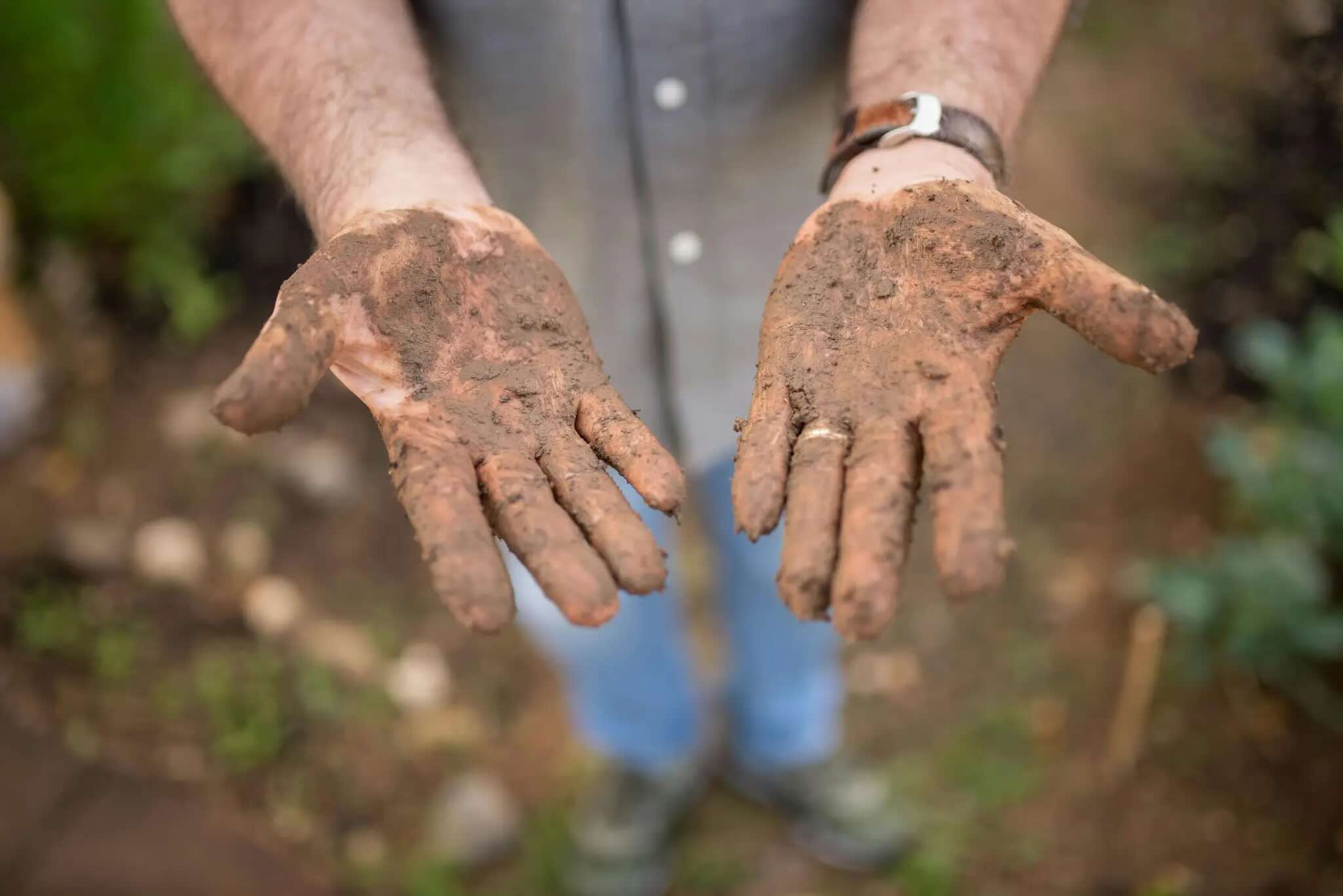
Photo Credit: Kampus Production (2021). A Dirty Hands with Soil [Photograph]. Pexels.
Photo Legend: A gardener shows off their hard work by exposing their dirt-covered
palms.
ClimateCon is around the corner, where we will take a look at the dirt on dirt! This annual conference is taking place on October 24th, 2024, where our theme focuses on the correlation between soil and climate change. Speakers Dr. Emily Duff (WCC), Dr. Emily Grman (EMU), and Julia Joblinski (WCC) will speak on the geology, biology, and cultural value of soil. You may not initially be inspired by the idea of soil, but it has a vital and complex role in our environment. Healthy soil holds air, water, and nutrients for plant roots to thrive several feet below the surface. Soil also contains microbial organisms that help break down decaying organic matter, replenishing the nutrients the plants need. It can even store 3 times as much carbon as Earth’s atmosphere does. But there’s a problem– the way we have used soil is having an impact on our planet.
Urban land development has increased the amount of impermeable surfaces across the world. When we terraform our land by compacting soil and pouring concrete for the development of amenities such as parking lots or highways, we lose access to not only the soil, but plants as well. With a lack of plant roots in these areas to absorb rain, flooding can become a large issue to urban populations when there’s improper drainage.
In an agricultural setting, a freshly tilled tract of land leaves a large amount of soil exposed to sun, wind, and rain. Depending on the farmer, crops may also be sprayed with pesticides and herbicides. A flood will carry these sediments, along with the other pollutants, downstream where they can cause serious damage to structures, contaminate surrounding environments, and lead to health issues. While erosion may be a naturally occurring process, the way soil is being used is accelerating the rate at which it becomes displaced.

Photo Credit: Ehlers, M. (2020). Green Moss on Brown Tree Roots [Photograph]
Photo Legend: The soil of a steep natural wall is held together by entwined tree and
plant roots.
To help preserve soil and combat climate change, there are 3 simple actions you can take in your backyard. For example, you can leave natural vegetation undisturbed to keep roots in place, preventing soil erosion from wind and rain. Planting native species is also helpful, as they’re adapted to the local environment and need less maintenance. There is a list of Michigan-native species from Michigan State University. Instead of using weed-killers containing glyphosate, which harms beneficial microbes and earthworms, try removing the weeds manually. Chemicals in pesticides are also non-discriminating and can damage soil as well.
Not yet available to casual gardeners but in the experimental phase is CarbonBuilder. This product is a kind of “fungal talcum” applied to seeds at the time of planting. Farmers and scientists have been experimenting with its effectiveness to enhance the relationship between fungi and plant roots, shown to boost both soil health and carbon absorption.
So, in short, here are a few ways a home gardener can help combat climate change:
- Prevent Erosion by leaving roots to retain soil
- Plant Native plants to conserve water and feed pollinators Avoid Spraying chemicals that can harm beneficial organisms
What we do at home can have an effect on climate change!
Sources
- Michigan State University – Native Plants
- Natural Library of Medicine – Effects of Glyphosphate
- LoamBio – CarbonBuilder
Tags: Sustainability
